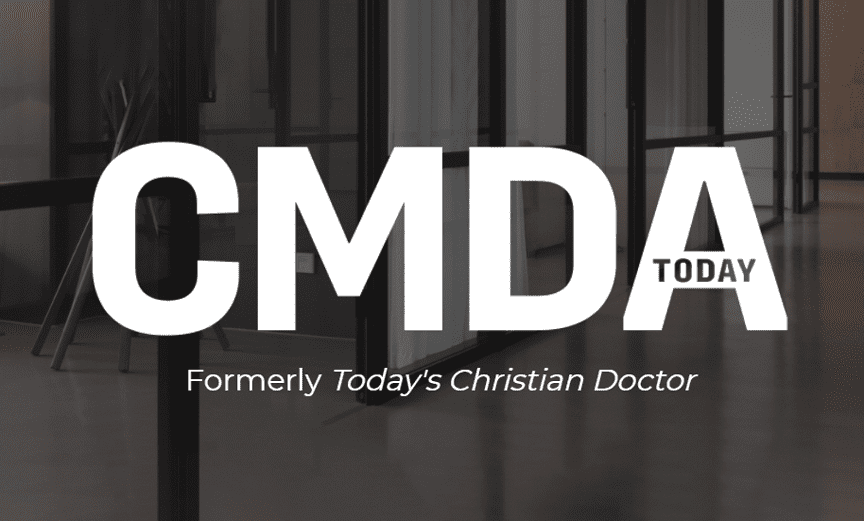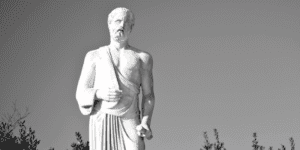
Moral Distress and Moral Injury in Healthcare
Moral distress and moral injury are relatively new terms, but the problems they reflect are ancient. They address the need to face moral challenges with the integrity of an undivided heart.

by Christian Medical & Dental Associations®
CMDA Ethics Statement
Synopsis
Moral distress and moral injury are relatively new terms, but the problems they reflect are ancient. They address the need to face moral challenges with the integrity of an undivided heart.[1] Moral distress occurs when serious ethical choices are burdened by forces that constrain (or threaten to constrain) a person’s moral agency. Situations involving moral distress affect our moral identities and consciences; they require careful assessment, dialogue, and accurate understanding of context-specific roles and responsibilities. When unresolved, moral distress may lead to moral injury, compartmentalization (loss of individual integrity), and burnout. Moral distress involves the present, in which actions are still open to decision. Moral injury involves the past, in which completed decisions have negative moral effects that create discomforting memories and negative feelings. Moral injury arises after a person commits, participates in, or observes an action that violates the person’s core ethical beliefs. This may result in moral feelings of guilt and shame and a sense of moral failure. The experience of moral injury is not always preceded by an experience of moral distress.
Moral distress and moral injury are directly related to conscience which by God’s grace helps us overcome constraints that threaten our ability to do what is morally good and right, and which motivates us toward reconciliation and forgiveness after we have failed to do what we should have done. In response to moral distress, conscientious practice allows us to exercise our moral agency as God’s image bearers and live with an integrity that harmonizes our beliefs, values, words, and actions.
Christian healthcare professionals realize that being faithful in morally distressing situations may bring suffering, but we believe that Christ’s faithfulness to us in suffering leads to endurance, character, and hope (Romans 5:1-5). By relying on God’s strength and trusting in his providence and mercy, we are empowered with endurance in the face of moral distress, and we see in the suffering of moral injury the need for God’s healing and, when there is guilt, forgiveness. As Christian healthcare professionals, we should show compassion to colleagues who experience moral distress and moral injury, and we should encourage each other towards ever greater reliance on God’s grace for the strength to endure in the midst of adversity.
- Definitions and Features of Moral Distress and Moral Injury
- Moral distress occurs when a person’s moral agency is constrained. Moral distress first appeared as a concept in the nursing literature in reference to the experience of psychological distress associated with a morally challenging situation in which a constraint of some kind prevents people from acting according to what they know or believe is right (Jameton, 2017; McCarthy & Deady 2008).
- Some constraints are internal to the person, such as fear, lack of resolve, or misperception.
- Other constraints are external to the person, such as obstacles imposed by supervisors, people in authority, institutions, policies, or laws. When constraints are external, the moral problem is that circumstances (people, structures, or systems) impede a person’s ability to use his or her moral agency to fulfil a perceived ethical obligation to act in a way that is believed to be right and good.
- The literature on moral distress reveals heterogeneity in how the concept may be interpreted (Morley et al. 2019). Nevertheless, there are good reasons to follow the standard account of moral distress that is defined by constraints on moral agency and its consequences (McCarthy & Monteverde 2018). This interpretation focuses attention on the personal distress that is experienced when serious ethical choices are burdened or impeded by forces strong enough to constrain (or threaten to constrain) moral agency.
- To qualify as moral distress, the rightness and significance of an impeded action ought to be clear to the person involved and reach a sufficient level of ethical seriousness, recognizing that the determination of this level will vary among persons based on circumstances and differences of conscientious assessment (see CMDA statement on Conscience in Healthcare).
- Discerning this level of clarity and ethical seriousness can be difficult, and an individual’s moral assessment ultimately rests in the conscience of the individual.
- Ethically serious situations should involve substantial matters of right and wrong that pertain to our core moral commitments and identities as moral agents.
- When this level of seriousness has been reached, the individual should strive to explain the moral basis of the assessment as part of the work of conscientious practice.
- The assessment should be informed and justified by an accurate understanding of the individual’s role and responsibilities in the situation.
- To avoid applying moral distress too broadly, situations that cause moral distress should be distinguished from other morally challenging circumstances, such as moral uncertainty, moral disagreement, or moral dilemmas.
- A situation should not be considered an instance of moral distress just because it is morally troubling.
- Many moral challenges will be experienced as stressful because they are difficult, not because they involve the kind of constraints that define cases of moral distress.
- Many ethical disagreements and dilemmas need to be engaged as moral challenges, even though they do not include the impediments characteristic of moral distress.
- For instance, when a patient and physician disagree about the best course of treatment, such a disagreement may be very stressful, but it should not routinely be seen as an instance of moral distress because a patient’s freedom to disagree with a physician is ethically legitimate (so long as it does not include an effort to coerce a physician to participate in an action that goes against his or her conscience).
- Such disagreements do not represent an internal or external constraint as reflected by the concept of moral distress; rather, they are an outcome of the bilateral moral agency that characterizes the patient-physician relationship, however uncomfortable that outcome may feel.
- Moral injury is a related concept that describes the distress individuals experience “when they perpetrate, witness or fail to prevent an act that transgresses their core ethical beliefs” which, when severe, “may erode their sense of meaning and place in the world, even challenging their faith” (Jones 2020, p. 127). The concept of moral injury was developed in literature that discussed the psychological and spiritual trauma combat soldiers experienced after acting (or consenting to others acting) in ways that violated their most deeply held moral beliefs and values (Kinghorn 2012). The concept of moral injury can also be applied to healthcare professionals (Koenig HG & Al Zaben 2021; Mantri et al. 2021).
- Moral injury involves the past: the time for action (or inaction) in the situation is gone, and the burden of events and completed choices lingers with discomforting memories and negative feelings. By contrast, moral distress involves the present: the situation is still open to decisions and actions that can impact outcomes.
- Moral injury can have many features, including a sense of guilt, shame, moral failure, betrayal and lost trust, loss of meaning, difficulty forgiving oneself, self-condemnation, religious struggle, and weakening or loss of religious faith or hope (Koenig HG & Al Zaben 2021).
- Both moral injury and moral distress cause suffering because there is a conscience-driven awareness that things are not as they should be, or should have been, and often because the individual involved believes he or she has (or had) an obligation to act rightly.
- When moral distress is unresolved, it can lead to negative outcomes.
- It can lead to moral injury when individuals bear the burden of a morally traumatic experience that may or may not include a sense of guilt for past actions or inactions that are recognized to have been wrong.
- It can lead to harmful compartmentalization when an individual tries to avoid the discomfort of moral distress by conforming to the requirements of a specific context (e.g., workplace) even though those requirements contradict the individual’s core beliefs and values. This kind of compartmentalization results in a loss of integrity that is essential for an individual’s moral agency (MacIntyre 1995).
- It may cause or exacerbate burnout.
- Burnout is described as a psychological syndrome that represents “a prolonged response to chronic interpersonal stressors on the job” (Maslach & Leiter 2016, p. 103).
- Burnout is understood as having three possible dimensions: (1) overwhelming exhaustion, (2) feelings of cynicism, detachment, or depersonalization, and (3) a sense of ineffectiveness (Maslach & Leiter 2016).
- Moral distress and moral injury can be expected to contribute to all dimensions of burnout and especially to feelings of cynicism when there is a gap between the values of the individual and the values (spoken or unspoken) of the workplace (McCarthy & Monteverde 2018; Dzeng & Curtis 2018).
- Relationship between Moral Distress and Conscience
- For a full description of conscience, see the CMDA statement on Conscience in Healthcare.
- Conscience is a God-given endowment that enables us to know and respond to moral truth (Genesis 1:27; Romans 2:15). To live by conscience is to live with integrity (1 Kings 9:4; 2 Corinthians 1:12; Psalm 86:11) – with pure hearts (Matthew 5:8; 1 Timothy 1:5) and transformed minds (Romans 12:1-2; 2 Corinthians 3:18) that seek to love God and our neighbor (1 Corinthians 10:23-24; 1 Timothy 1:5) in keeping with Scripture (Deuteronomy 5:6-21; Deuteronomy 6:5; Psalm 119:111, 144; Mark 12:30-31; 2 Timothy 3:16-17) and the Holy Spirit’s guidance (Luke 11:9-13; 1 Corinthians 2:16; Philippians 1:9-11).
- Because conscientious judgments reflect our best moral understanding of what is good and right, we should always follow our consciences (Acts 24:16; 2 Corinthians 1:12; 1 Timothy 1:19; 3:9; James 4:17) even as we recognize that our consciences are fallible and ultimately under God’s judgment (1 Corinthians 4:3-4; Hebrews 4:12-13) and mercy (Psalm 68:19; Romans 14:4).
- Because reason is essential in conscience (2 Corinthians 4:2; 5:11), Christians should be prepared to engage in moral deliberation and explain and commend the reasons for their conscientious actions to others. To live according to conscience is a fundamental moral and spiritual obligation for the Christian because we are called to hold on to faith and a good conscience (1 Timothy 1:18-19; 3:9).
- Living conscientiously reflects the Christian’s duty and desire to put God’s kingdom first by pursuing what is true and right; living a life of love; fleeing immorality; and enduring suffering that produces perseverance, character, and hope (Matthew 6:33; Acts 5:29; Philippians 4:8; Ephesians 5:1-11; 1 Timothy 6:11-12; Hebrews 12:1-11; Romans 5:1-5).
- Moral distress is directly related to conscience. In fact, the experience of moral distress can be seen as part of the perceptive work of conscience when we are faced with a moral challenge and encounter internal or external constraints that impede our ability or willingness to do what we know is morally good and right.
- To experience moral distress is a manifestation of an active and unsettled conscience.
- The experience of moral distress is illuminated by understanding the three dimensions of conscience: reason, emotion, and motivation (see statement on Conscience in Healthcare). These three dimensions allow us to understand, feel, and do what we believe is good and right.
- The experience of moral distress can be seen as reflecting these three dimensions of conscience through:
- an intellectual understanding that something is morally wrong;
- an emotional feeling of discomfort related to that moral wrong and our responsibility to respond to it;
- a motivational desire to do what is right in response to that moral wrong.
- In the same way that each person’s conscience has God-given authority for that person which sets it above the judgments of other human beings (see CMDA statement on Conscience in Healthcare), each person must determine for himself or herself whether a stressful situation qualifies as an instance of moral distress. Such discernment should conform with God’s Word (Psalm 119:111, 144; Mark 12:30-31; Romans 12:1-2; 2 Timothy 3:16-17); and because of the challenges inherent in moral discernment, it should be accepted that Christians may sometimes reasonably disagree about whether a given situation should be understood as being an instance of moral distress (I Corinthians 4:3-4; Galatians 6:4-5).
- Moral Distress in Healthcare Needs Conscientious Practice
- The proper response to moral distress is conscientious practice, by which we exercise our moral agency as God’s image bearers and live with the integrity of an undivided heart (1 Kings 9:4; 2 Corinthians 1:12; Psalm 86:11) that demonstrates coherence across our beliefs, values, words, and actions.
- Conscientious practice may involve doing or saying what is good, right, and true, or it may involve a refusal to participate in or cooperate with evil (see the sections on ‘Conscientious Practice in Healthcare’ and ‘Complicity with Evil’ in the CMDA statement on Conscience in Healthcare).
- Conscientious practice by the Christian healthcare professional must be motivated by love of God and neighbor (1 Corinthians 10:23-24; 1 Timothy 1:5) and demonstrated by Christian virtues (Matthew 5-7; Romans 13:8-10; 1 Corinthians 13; Galatians 5:22-23; Colossians 3:12-14).
- Conscientious practice should be guided by wisdom (Philippians 1:9-11) and moral deliberation (Galatians 6:4-5) to discern how our decisions and actions, as Christians, ought to reflect the biblical beliefs and values on which they are based. Christians should be encouraged to seek counsel from fellow believers who have wisdom in matters of moral and spiritual discernment (1 Corinthians 12:7-11).
- Moral communication and dialogue are essential parts of conscientious practice in healthcare. Communicating the beliefs, values, and reasoning that guide our moral assessments clarifies our thinking, demonstrates respect to others by giving them reasons, invites feedback and mutual criticism, and helps strengthen us as we speak truthfully about what we believe is right.
- When moral distress is engaged by moral communication that leads to genuine dialogue and deliberation, one or more forms of resolution can be expected. Moral communication may lead to:
- Clarification of misunderstandings pertaining to roles, requirements, decisions, goals, or alternative possibilities.
- Recalibration in the mind of the morally distressed person who becomes persuaded and thereby reassured by new information, good counter arguments, or better insights.
- Recusal by the morally distressed person when disagreement persists but reasonable accommodation is made by adjusting roles and responsibilities. (Kaldjian 2021)
- Being a faithful witness to what is true, good, and right may bring suffering (1 Peter 2:20). But the Christian knows that Christ’s faithfulness to us in suffering leads to endurance, character, and hope (Romans 5:3-5), and that when God brings us trials and desperation, he does so to teach us to rely not on ourselves but on him (2 Corinthians 1:8-9), and to trust in his grace, mercy, and faithfulness (Psalm 37:1-9, 39-40; 1 Corinthians 10:13; 2 Corinthians 12:9).
- This fundamental reliance on God’s strength and trust in his loving providence is the basis of the Christian understanding of endurance and resilience in the face of moral distress and adversity (Psalm 145:14-20; Matthew 6:25-34; Romans 8:28-39; Ephesians 6:10).
- Moral Injury Needs Healing and May Need Forgiveness
- Moral distress that is unresolved may lead to moral injury from the burdens of morally traumatic experiences that may or may not include a sense of guilt for past actions or inactions that are recognized to have been wrong.
- Moral injury is an experience that in some respects can be viewed as a traumatic event, the outcome of which may be profoundly negative and long-lasting, but need not be. Factors associated with the resilience that leads to post-traumatic growth may be relevant to moral injury, and these include finding meaning in adversity, gratitude, the ability to forgive, willingness to seek social support, and the ability to follow one’s own moral compass (Thielman 2019).
- Persons struggling with the symptoms of moral injury should be encouraged to seek appropriate psychological and pastoral care, especially when suffering interferes with their relationships with God, family, friends, or colleagues.
- Christian health professionals suffering from moral injury should be encouraged to pray and seek wise counsel, support from fellow believers, and pastoral care in the confidence that God hears our cries of distress, that he is compassionate, that he forgives and cleanses us from our sins, and that his love works to redeem our traumatic experiences and moral failures by the healing power of his grace (Psalm 31:1-10; Psalm 42; Psalm 55; Psalm 91:15; Psalm 103; 1 John 1:9; Ephesians 1:7-8; James 5:13-16).
- As Christians, we should be encouraged to rely on all of Scripture, especially the Psalms, to grow in our ability to pray to our heavenly Father before, during, and after times of moral distress or moral injury. Through prayer we can give voice to distress, direct our thoughts to God in the midst of struggle, find God’s meaning in the midst of adversity, cultivate gratitude and hope, and develop the Christian virtue of endurance (Thielman 2019). In such prayer we seek to grow in the grace and knowledge and joy of our Lord and Savior Jesus Christ (Romans 5:1-5; Colossians 1:9-14; 2 Peter 3:18), who promises to love and reveal himself to us as we show our love for him by obeying his commandments (John 14:21).
- Recommendations for Healthcare Professionals and Institutions
- Healthcare professionals and institutions should know the characteristics of, and common circumstances associated with, moral distress and injury so that these experiences can be recognized and addressed. Awareness of these characteristics can be assisted by reviewing the contents of instruments used to measure moral distress and injury (Allen et al. 2013; Epstein et al. 2019; Mantri et al. 2021).
- When healthcare professionals experience moral distress or injury and are unable to resolve or experience healing of their moral discomfort, they should seek guidance and support from trusted colleagues, loved ones, or knowledgeable professionals, depending on the nature of their need and the availability of persons who are able to provide the help that is needed.
- Healthcare professionals should try to cultivate moral resilience in their lives so that they are better able to respond to morally challenging situations. Cultivation of moral resilience may include fostering more self-awareness, developing more ethical competence, speaking up with greater clarity and confidence, finding meaning in the midst of adversity, engaging others, and making efforts to contribute to a culture of ethical practice in their work environment (Rushton 2016).
- Healthcare institutions should support policies and practices that minimize the likelihood of moral distress and moral injury by (a) addressing ethical issues through quality control, quality improvement, and root cause analyses; (b) encouraging debriefing meetings after morally demanding events; (c) supporting ethics consultation services; and (d) respecting the need for conscientious practice. Healthcare institutions should expect to observe a relationship between moral distress and burnout (Dzeng & Curtis 2018), making the need for an ethically supportive institutional culture all the more urgent.
- Conclusions
- CMDA affirms that Christian healthcare professionals should take moral distress and moral injury seriously because we are called to live with a good conscience.
- CMDA affirms that Christian healthcare professionals should understand moral distress as a response of conscience when facing constraints that impede our ability to do what is good and right.
- CMDA affirms that Christian healthcare professionals should understand moral injury as a form of suffering that needs God’s healing and, when there is guilt, forgiveness.
- CMDA affirms that Christian healthcare professionals should show compassion to colleagues who experience moral distress and moral injury through listening, wise counsel, prayer, and encouragement toward pastoral care.
- CMDA affirms that God is with us in the midst of every adversity and uses moral distress and moral injury to make us more reliant on his grace, to increase our endurance as Christians, and draw us closer to him.
- CMDA affirms that healthcare institutions should (a) recognize that moral distress and moral injury may occur in all healthcare professionals; (b) respect the need for conscientious practice by healthcare professionals; (c) remedy causes of moral distress and moral injury; and (d) offer appropriate resources to mitigate harms from moral distress and injury.
Appendix: Four Examples of Moral Distress and Moral Injury
(1) Dishonesty about prognosis (moral distress)
A nurse is caring for a man in the ICU who has a poor prognosis. The nurse is troubled because the attending physician acknowledges the patient’s poor prognosis when speaking privately with the care team but nevertheless declines the nurse’s request that there should be an honest conversation with the patient about his prognosis. The attending voices concerns that the patient might lose hope and decide against ongoing plans for life-sustaining treatment if there is a candid discussion of prognosis. The nurse believes the patient has a right to know the seriousness of his prognosis but feels powerless to say what she believes needs to be explained to the patient.
(2) Gender reassignment procedures and pronouns (moral distress)
A medical student has just started her ambulatory care rotation and learns that during the rotation she will be assigned to work one afternoon in a transgender care clinic. She wants to be able to help all patients who need care, regardless of their feelings about their sexual identity, but she does not think that hormonal and surgical treatments are the appropriate way to provide care for persons with gender dysphoria. As she thinks more and more about the implications of working in the transgender care clinic, she becomes increasingly disturbed by the prospect of being expected to use patients’ preferred pronouns that contradict their biological sex, and to participate in counseling discussions that support treatments she cannot endorse in good conscience.
(3) Non-disclosure of medical error (moral distress and moral injury)
A patient with multiple medical problems is stable and receiving treatment on a general medical service. The patient’s condition unexpectedly deteriorates and requires transfer to the ICU. Diagnostic evaluation reveals the patient has suffered a myocardial infarction complicated by congestive heart failure. Review of the patient’s medications in the 48 hours prior to ICU transfer reveal a serious medication error, which provides the most likely explanation for the adverse cardiac event. The ICU resident asks the ICU attending how they should handle the disclosure of the medication error to the patient, since the resident believes patients are entitled to know about medical errors in their care, especially serious errors. The ICU attending says it would be better to avoid talking about the medication error, since it is not completely clear that the medication error led to the adverse cardiac event. The ICU resident is surprised and troubled by his attending physician’s response but does not feel it is his place as a resident to go against his attending physician. Years later, the resident (now a practicing physician) is disturbed by the memory of his unwillingness to question his attending physician and believes he failed to do what he should have done to try to find a way to ensure that the patient was informed about the medication error.
(4) Referral for abortion (moral distress and moral injury)
A resident is working in an ambulatory clinic. One of her patients is a young woman presenting for a routine follow-up visit. Toward the end of the appointment, she discloses to the resident that she is pregnant and would like a referral for an abortion. The resident is caught off guard by this unexpected request. The resident believes abortion is wrong and wonders what to say, not wanting to sound insensitive or confrontational, but also not wanting to give her patient the impression that she thinks abortion is morally acceptable. After respectfully inquiring about the patient’s request and feelings about her pregnancy, the resident, who is pressed for time, reluctantly provides a referral to a nearby clinic that provides abortions. The following week the abortion is performed. Years later, the resident (now a practicing physician) continues to be disturbed by the memory of the encounter with this patient because she, the resident, believes she played a role in the series of events that led to the abortion, making her morally complicit in an act she knew was wrong.
Approved by the House of Representatives
Passed with 42 approvals, 0 opposed, 0 abstention
October 22, 2022, virtual
References
Allen R, Judkins-Cohn T, deVelasco R, Forges E, Lee R, Clark L, Procunier M. Moral distress among healthcare professionals at a health system. JONAS Healthc Law Ethics Regul 2013;15(3):111-8.
Dzeng E, Curtis JR. Understanding ethical climate, moral distress, and burnout: a novel tool and a conceptual framework. BMJ Quality & Safety 2018;27(10): 766-70.
Epstein EG, Whitehead PB, Prompahakul C, Thacker LR, Hamric AB. Enhancing understanding of moral distress: the measure of moral distress for health care professionals. AJOB Empir Bioeth. 2019;10(2):113-24.
Jameton A. What moral distress in nursing history could suggest about the future of health care. AMA Journal of Ethics 2017;19(6): 617-28.
Jones E. Moral injury in a context of trauma. British Journal of Psychiatry 2020;216(3):127-8.
Kaldjian LC. Moral distress, conscientious practice, and the endurance of ethics in healthcare
through times of crisis and calm. Journal of Medicine and Philosophy (accepted for publication).
Kinghorn W. Combat trauma and moral fragmentation: a theological account of moral injury. Journal of the Society of Christian Ethics 2012;32(2):57–74.
Koenig HG, Al Zaben F. Moral injury: an increasingly recognized and widespread syndrome. Journal of Religion and Health 2021 Jul 10:1–23.
Maslach C, Leiter MP. Understanding the burnout experience: recent research and its implications for psychiatry. World Psychiatry 2016;15:103-111.
MacIntyre A. Social structures and their threats to moral agency. Philosophy 1995;74: 311-29.
Mantri S, Lawson JM, Wang Z, Koenig HG. Prevalence and predictors of moral injury symptoms in health care professionals. Journal of Nervous and Mental Disease 2021 Mar 1;209(3):174-180.
McCarthy J, Deady R. Moral Distress Reconsidered. Nursing Ethics 2008;15(2): 254-62.
McCarthy J, Monteverde S. The standard account of moral distress and why we should keep It. HEC Forum 2018;30(4): 319‐28.
Morley G, Ives J, Bradbury-Jones C, Irvine F. What is ‘moral distress’? A narrative synthesis of the literature. Nursing Ethics 2019;26(3): 646-62.
Rushton CH. Moral resilience: a capacity for navigating moral distress in critical care. AACN Adv Crit Care 2016;27(1):111-9.
Thielman, Samuel. Praying the Psalms: from trauma to resilience. In: Tackling Trauma: Global, Biblical, and Pastoral Perspectives (Paul A. Barker, ed). Carlisle, UK: Langham Global Library, 2019 (pp. 13-34).
Editor’s Note: Scriptures cited throughout this statement are available for download at www.cmda.org/ethics.
[1] See the Appendix for four examples of moral distress and moral injury.
This Feature Story Appears in:
Other Recent CMDA Today Articles:
- « Previous
- 1
- …
- 3
- 4
- 5




